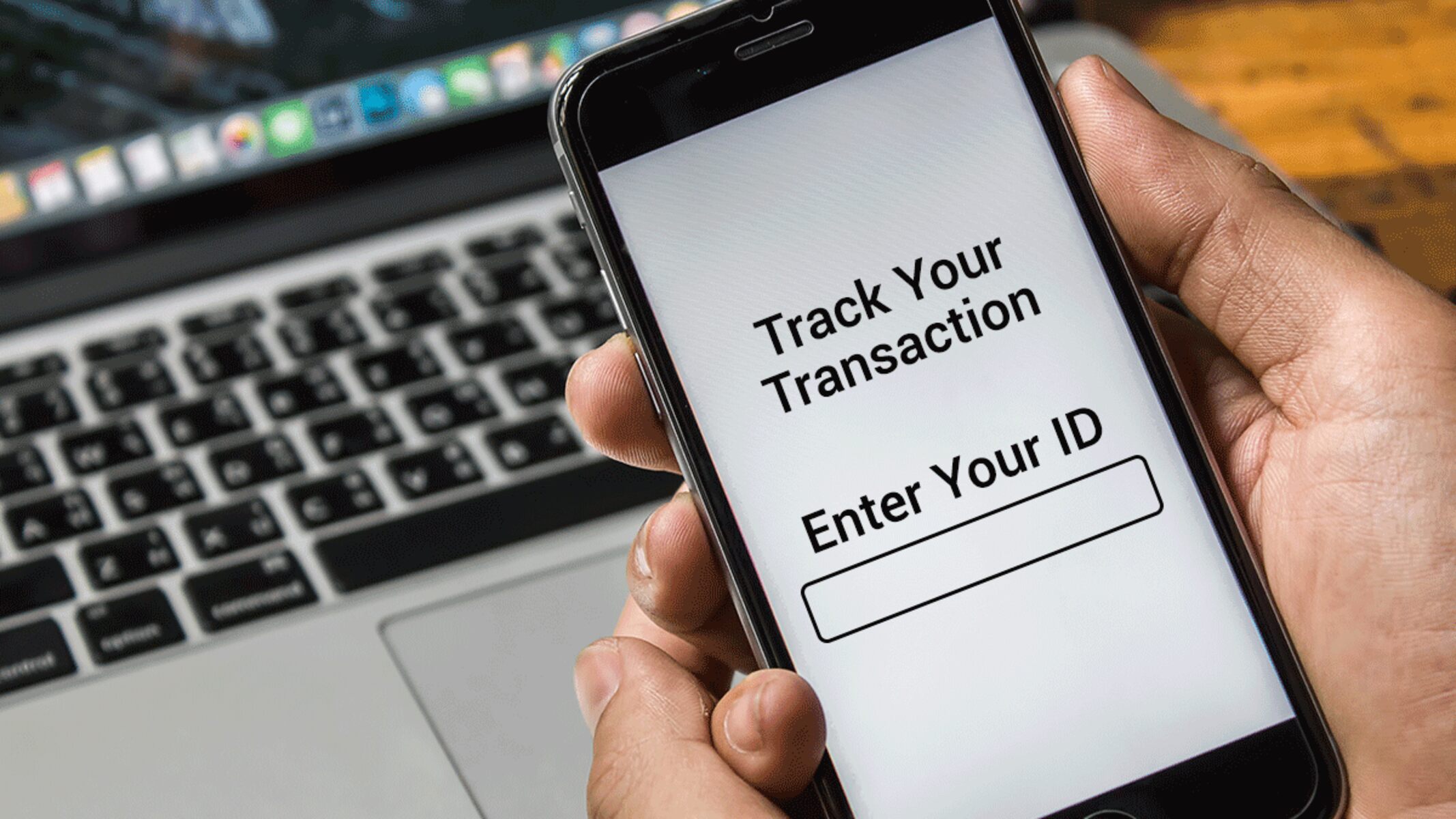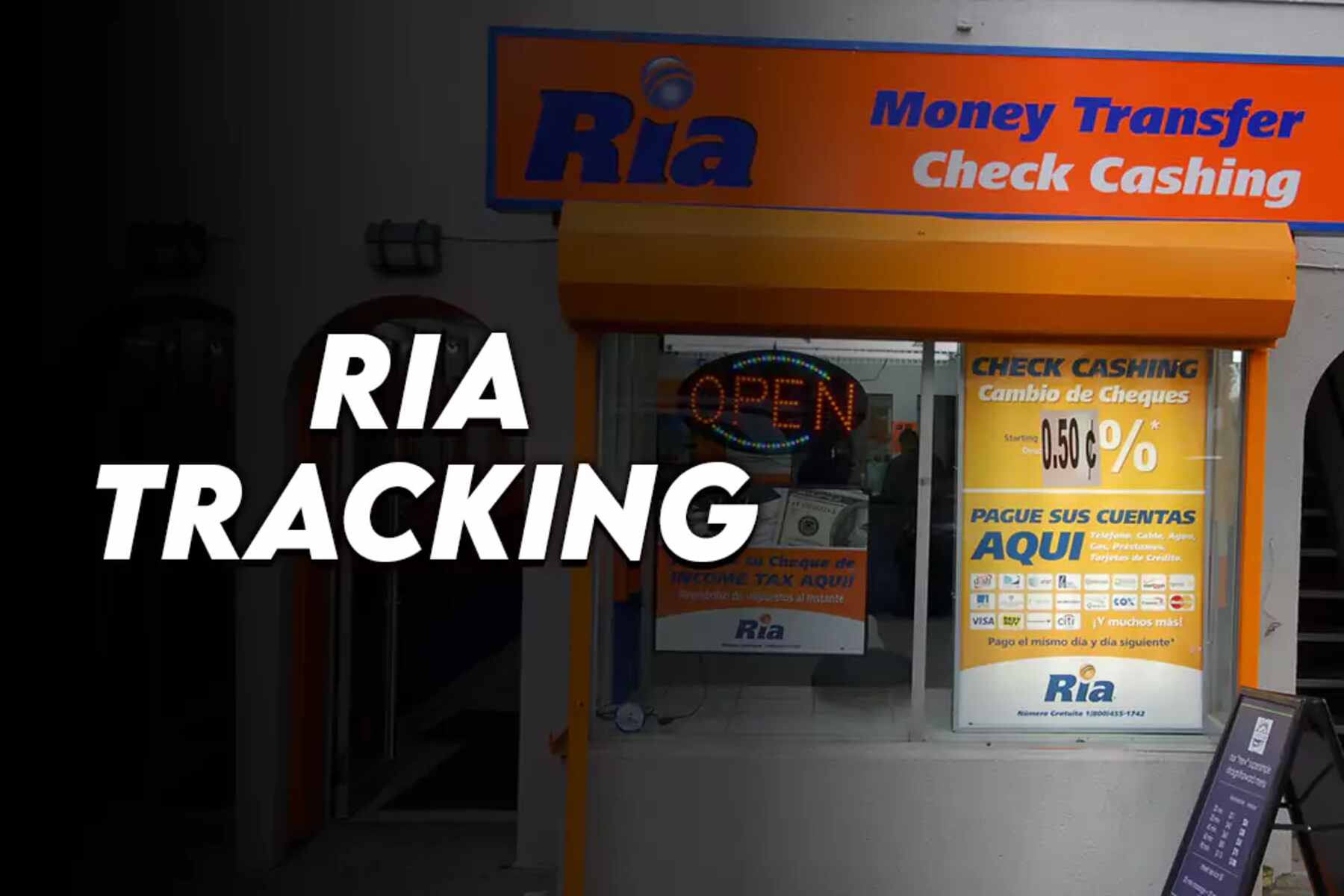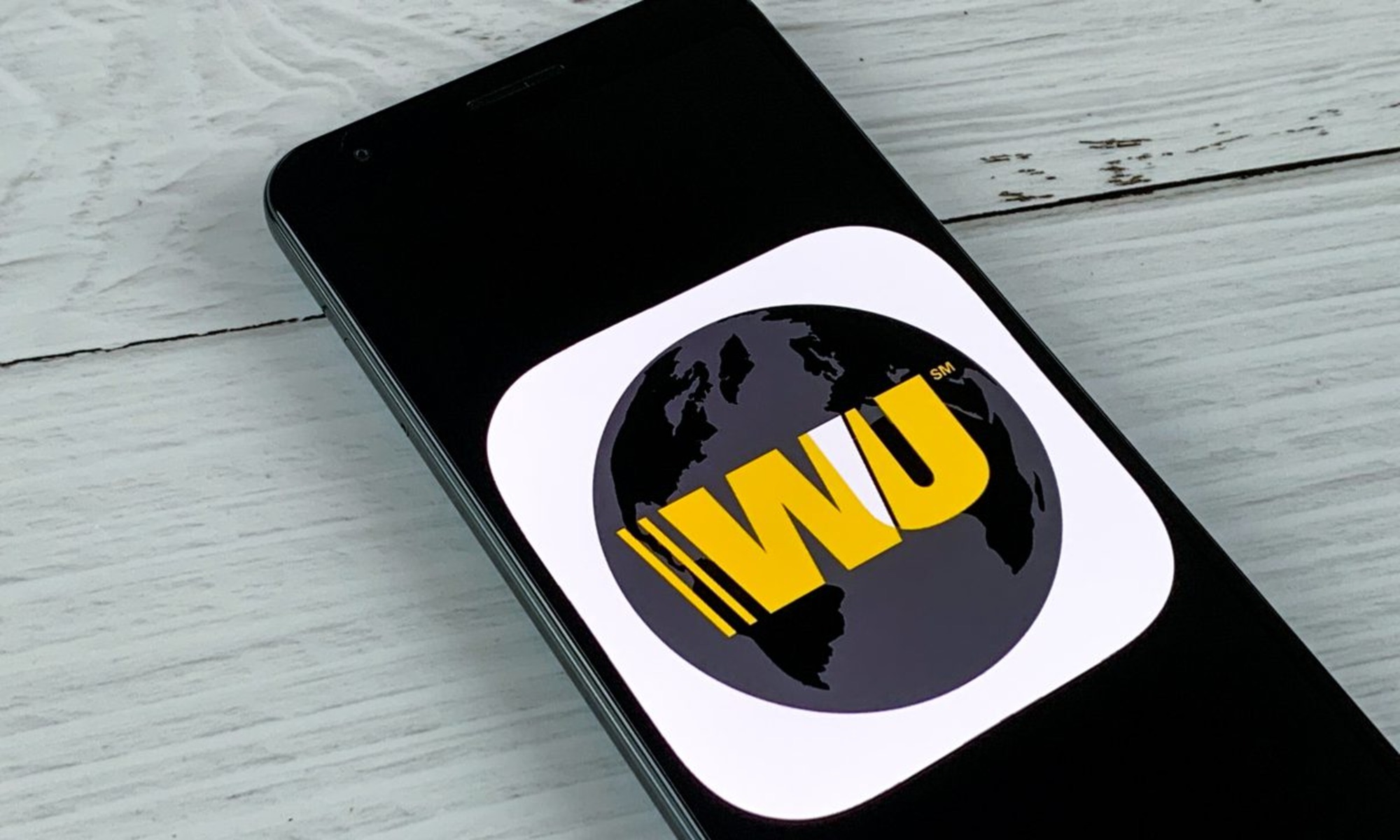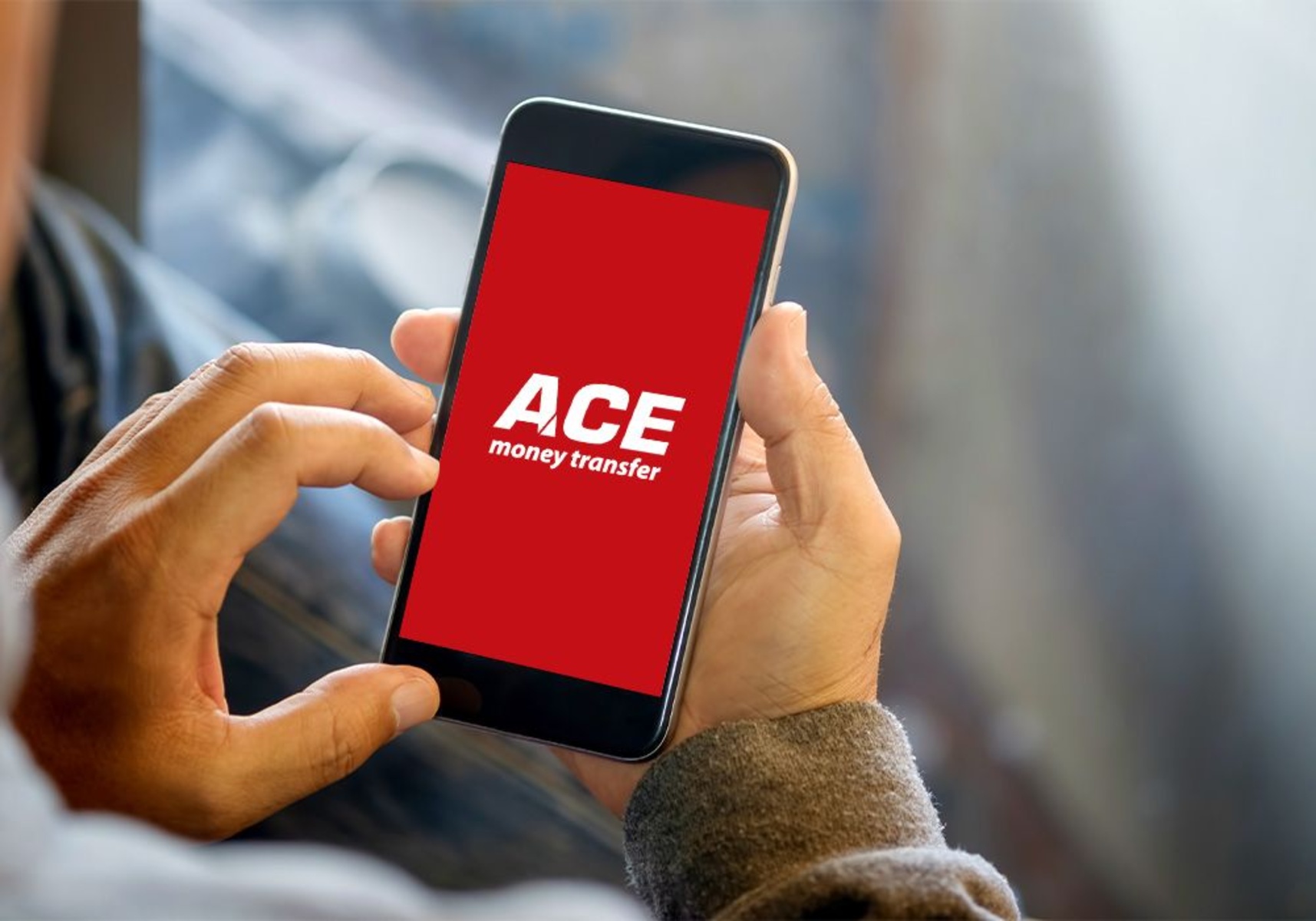Introduction
When it comes to sending money to friends, family, or business partners, ensuring that your money transfer arrives safely and on time is essential. This is where tracking your money transfer becomes crucial. Tracking allows you to have a real-time update on the status of your transfer, giving you peace of mind and eliminating any uncertainties along the way.
A money transfer refers to the process of sending funds from one individual or organization to another using various electronic methods such as online platforms, mobile applications, or traditional money transfer services. With the advancement of technology, money transfers have become more convenient and accessible, allowing people to send and receive money across borders with ease.
Tracking your money transfer offers several advantages, the most vital being transparency. By tracking your transfer, you can monitor the progress and have a clear understanding of its status. It allows you to identify any potential delays or issues that might arise during the process.
Furthermore, tracking provides you with a sense of security. Money transfers often involve large sums of money, and knowing exactly when and where the funds will arrive gives you confidence and helps you plan accordingly. Tracking also enables you to have a record of the transaction, which can be useful for future reference or disputes.
In this article, we will guide you through the process of tracking your money transfer, ensuring a smooth and hassle-free experience. Whether you are using an online platform, a bank transfer, or a dedicated money transfer service, these tips will help you stay informed and in control of your transfer.
What is a Money Transfer?
A money transfer refers to the act of sending money from one person or place to another. This can be done through various channels, including banks, online platforms, money transfer agencies, or mobile payment apps. The primary purpose of a money transfer is to send funds to someone who is in a different location or country, allowing them to access the money quickly and conveniently.
Money transfers have become increasingly popular and essential in our globalized world. They serve various purposes, including sending money to family and friends, paying bills or invoices, supporting businesses, and even making charitable donations. Whether you are sending money domestically or internationally, money transfers offer a secure and efficient way to send funds.
There are different methods available for conducting a money transfer. One common way is through a bank transfer, where you provide the recipient’s bank account details, and the funds are transferred electronically. Another option is using online platforms or mobile apps that specialize in money transfers. These platforms often offer competitive exchange rates and low fees, making them a popular choice for individuals and businesses.
Some money transfer services also allow cash pickups, where the recipient can collect the funds from a designated location or agent. This method is particularly beneficial in situations where the recipient does not have access to a bank account or prefers to receive the money in cash.
It’s important to note that money transfers are subject to certain regulations and policies set by financial institutions and government authorities. These regulations are in place to prevent money laundering, fraud, and other illegal activities. Therefore, when conducting a money transfer, it is essential to provide accurate information and comply with any identification or verification requirements.
Overall, money transfers play a significant role in today’s global economy by facilitating the movement of funds across borders and allowing individuals and businesses to conduct transactions efficiently and securely. Whether you are sending money to a loved one, paying an international supplier, or supporting a cause, understanding the process and options available for money transfers is essential to ensure a smooth and successful transaction.
Why Track Your Money Transfer?
Tracking your money transfer provides several key benefits that can greatly enhance your overall experience and ensure the security and timely arrival of your funds. Here are a few reasons why tracking your money transfer is essential:
- Transparency and peace of mind: By tracking your money transfer, you gain real-time visibility into the status of your transaction. This transparency allows you to stay updated on the progress of your transfer and eliminates any uncertainties or anxieties you may have. Knowing where your funds are at any given time provides reassurance and peace of mind.
- Identify and resolve issues: Tracking your money transfer enables you to identify any potential delays, errors, or issues that might arise during the process. If there are any unexpected hurdles in the transfer, you can address them promptly by contacting the transfer provider or seeking clarification. This proactive approach helps resolve problems before they escalate, ensuring a smooth and trouble-free transaction.
- Plan and manage your finances: When you track your money transfer, you have a clear understanding of when the funds will arrive at the recipient’s end. This allows you to plan and manage your finances accordingly. Whether it’s paying bills, meeting financial obligations, or managing your budget, tracking your transfer helps you stay in control of your money and make informed decisions.
- Recordkeeping and documentation: Tracking your money transfer provides you with a record of the transaction. This documentation can be useful for future reference, accounting purposes, or dispute resolution. Having a digital trail of your transfer ensures that you can access the information whenever needed, saving you time and effort in searching for past transactions.
- Protection against fraud: In today’s digital world, financial fraud is a concern. By tracking your money transfer, you can verify that the funds are being sent to the intended recipient and detect any suspicious activities. If you notice any unauthorized transactions or discrepancies, you can take immediate action to prevent further fraudulent activities and protect your money.
Overall, tracking your money transfer offers numerous advantages, from providing peace of mind and transparency to helping you stay in control of your finances. Whether it’s for personal or business purposes, taking advantage of the tracking options available ensures a smooth and secure transfer experience.
How to Track a Money Transfer
Tracking a money transfer is a straightforward process that allows you to monitor the progress of your transaction and ensure its safe and timely arrival. Depending on the method and service you are using, here are five common steps to track your money transfer:
- Keep all the details handy: Before attempting to track your money transfer, make sure you have all the necessary details readily available. This includes the transfer receipt, transaction number, recipient’s information, and any other relevant documentation. Having these details on hand will streamline the tracking process.
- Check the transfer status online: Many money transfer providers offer online tracking services on their websites or mobile apps. Visit the website or open the app, and look for the “Track Transfer” or similar option. Enter the required details, such as the transaction number or a reference number, to access the transfer status. You will be able to see the current location and expected delivery time of your money transfer.
- Contact the money transfer provider: If you are unable to track the transfer online or have any questions regarding the status of your money transfer, reach out to the customer support of the money transfer provider. They will assist you in obtaining the necessary information and address any concerns or issues you may have. Be prepared to provide them with the relevant details and identification to verify your transaction.
- Utilize tracking tools or apps: In addition to the money transfer provider’s tracking options, there are various third-party tracking tools and apps available. These tools aggregate information from multiple money transfer providers, allowing you to track multiple transfers from different providers in one place. Search for reputable tracking tools or apps, download them, and follow the instructions to track your money transfer.
- Check with the recipient: If all else fails or if your transfer provider does not offer online tracking services, you can always check with the recipient directly. Ask the recipient to provide updates or notification once they receive the funds. While this method may not provide real-time tracking, it can still help ensure that the money arrives at the intended destination.
By following these steps, you can easily track your money transfer and stay informed about its progress. Remember to keep all the necessary information handy and utilize the tracking options provided by the money transfer provider or third-party tracking tools to ensure a smooth and secure transfer experience.
Keep all the Details Handy
When it comes to tracking a money transfer, the first step is to ensure that you have all the necessary details readily available. Keeping these details handy will make the tracking process smoother and more efficient. Here are some essential details to keep in mind:
- Transaction information: This includes the transaction number, reference number, or any other unique identification number associated with your money transfer. This information is typically provided to you when you initiate the transfer. Make sure to jot down or save this information in a safe place for future reference.
- Recipient’s information: You’ll need the recipient’s name, contact details, and bank account information, depending on the method of transfer. Ensure that you have accurate and up-to-date information to avoid any delays or issues with the transfer.
- Transfer receipt: When you initiate a money transfer, you usually receive a receipt or confirmation. This receipt contains important details such as the amount transferred, the date and time of the transaction, and any fees or charges associated with the transfer. Keep this receipt safe as it serves as proof of the transaction and may be required for tracking or dispute resolution purposes.
- Identification documents: Some money transfer providers may require you to provide identification documents during the transaction process. Ensure that you have any necessary identification documents, such as a passport or identification card, readily available. This will help verify your identity if required during the tracking process.
By keeping all the necessary details handy, you can easily access the information needed to track your money transfer. This ensures a smooth and efficient tracking process, allowing you to stay informed about the status of your transfer and address any issues promptly.
Check the Transfer Status Online
One of the most convenient ways to track a money transfer is by checking the transfer status online. Many money transfer providers offer online platforms or mobile apps that allow you to access real-time information about your transaction. Here’s how you can check the transfer status online:
- Visit the money transfer provider’s website or open their mobile app: Start by accessing the official website of the money transfer provider you used or open their dedicated mobile app. Ensure that you are using a trusted and secure platform.
- Look for the tracking option: Once on the website or app, navigate to the tracking or status section. This may be labeled as “Track Transfer,” “Check Transfer Status,” or something similar. The location of this option may vary, but it is usually easily accessible from the main menu or dashboard.
- Enter the required information: In the tracking section, you will typically be prompted to enter certain details to access the transfer status. Common information requested includes the transaction number, reference number, or any unique identifiers associated with your money transfer. Ensure that you input the correct information to retrieve accurate tracking details.
- View the transfer status: Once you have entered the necessary information, the platform will display the transfer status. This may include information such as the current location of the transfer, estimated delivery time, or any status updates. Some platforms also provide tracking notifications via email or SMS, keeping you informed about any changes in the transfer status.
Checking the transfer status online allows you to have real-time visibility into the progress of your money transfer. It provides you with the convenience of accessing information from anywhere, at any time. By regularly monitoring the transfer status, you can stay updated on any delays, issues, or changes that may occur during the transfer process.
Keep in mind that the availability of online tracking may vary depending on the money transfer provider and the specific service used. If you encounter any difficulties or if the online tracking option is not available, consider reaching out to the customer support of the provider for assistance.
Contact the Money Transfer Provider
If you are unable to track your money transfer online or if you have any questions or concerns regarding the status of your transfer, it is advisable to contact the money transfer provider directly. They have dedicated customer support teams who can assist you in retrieving the necessary information and addressing any issues that may arise. Here’s how you can reach out to the money transfer provider:
- Locate the contact information: Visit the money transfer provider’s website or app and look for their contact information. This is usually found in the “Contact Us” or “Support” section. Note down the available contact methods such as phone numbers, email addresses, or live chat options.
- Prepare the required details: Before contacting the money transfer provider, ensure that you have all the necessary details regarding your transfer. These may include the transaction number, recipient’s information, transfer amount, and any other relevant documentation. Having this information readily available will help the customer support team assist you more effectively.
- Choose a contact method: Depending on your preference and the available options, choose the most convenient contact method. This may be a phone call, an email, or engaging in a live chat session. Some money transfer providers also provide customer support through social media platforms.
- Explain your query or concern: Once you reach out to the money transfer provider, clearly explain your query or concern regarding the status of your money transfer. Provide the customer support representative with the required details and any relevant information to ensure they can assist you accurately.
- Follow their instructions: Listen carefully to the instructions or guidance provided by the customer support representative. They may need additional information or documents to investigate or resolve your query. Cooperate with their requests and provide the requested information promptly to facilitate a resolution.
Contacting the money transfer provider directly allows you to get personalized assistance and address any concerns or issues that may arise. Their support team is trained to handle various scenarios and can provide you with the most up-to-date information regarding your money transfer. Remember to be patient and provide all the necessary details to ensure a smooth interaction and resolution of your query.
Utilize Tracking Tools or Apps
In addition to the tracking options provided by money transfer providers, there are various third-party tracking tools and apps available that can help you track your money transfer easily. These tools aggregate information from different money transfer providers, allowing you to track multiple transfers from various services in one place. Here’s how you can utilize tracking tools or apps:
- Research and choose a reputable tracking tool or app: Start by researching and identifying reputable tracking tools or apps that are known for their reliability and accuracy. Look for user reviews and ratings to ensure that you select a trustworthy option.
- Download and install the chosen tracking tool or app: Once you have identified a suitable tracking tool or app, download and install it on your device. Ensure that you download the official version from a trusted source such as the Google Play Store or Apple App Store.
- Create an account or log in: Depending on the tracking tool or app, you may need to create an account or log in using an existing account such as your Google or Facebook account. This will allow you to save and access your tracking details across multiple devices.
- Enter the necessary information: Once you have set up your account, follow the instructions provided by the tracking tool or app to enter the necessary information for tracking your money transfer. This may include the transaction number, recipient details, or any other unique identifiers.
- Track your money transfer: After entering the required information, the tracking tool or app will display the current status of your money transfer. It may provide details such as the location, estimated delivery time, or any updates related to the transfer. You can regularly check the app or set up notifications to receive updates as the status changes.
Utilizing tracking tools or apps can simplify the process of tracking your money transfer by centralizing information from different providers. It saves you time and effort by eliminating the need to track each transfer separately. However, it’s important to note that not all money transfer providers may be supported by these tools or apps. If your provider is not listed, you can explore alternative methods such as contacting the provider directly or using their online tracking options.
By utilizing tracking tools or apps, you can stay organized, access real-time updates, and have a comprehensive view of your money transfers, all in one place.
Check with the Recipient
If you have exhausted all other options and are still unable to track your money transfer, or if you simply want additional assurance, you can consider checking with the recipient directly. Communicating with the recipient can provide valuable insights into the status of the transfer. Here’s how you can go about checking with the recipient:
- Contact the recipient: Reach out to the recipient via phone call, email, or any other preferred method of communication. Ensure that you have accurate contact details for the recipient and that they are available to receive your inquiry.
- Inquire about the transfer: Politely ask the recipient if they have received the money or if they have any updates regarding the status of the transfer. They may be able to provide you with valuable information, such as the expected arrival date, any delays they may have encountered, or if there are any additional steps they need to take to receive the funds.
- Verify the details: It’s crucial to ensure that the recipient has accurately received the transfer details from you. Confirm that the recipient has the correct transaction number, reference number, or any other identifiers associated with the transfer. This will help avoid any miscommunication or confusion regarding the transfer.
- Document the conversation: Keep a record of your communication with the recipient, including the date, time, and details discussed. This documentation can serve as evidence or reference in case there are any disputes or issues that arise in the future.
Checking with the recipient directly provides an additional perspective and can help alleviate any concerns or uncertainties about the status of your money transfer. However, it is important to note that relying solely on the recipient’s feedback may not provide real-time tracking updates. It is still recommended to use online tracking options or contact the money transfer provider for the most accurate and up-to-date information.
By maintaining open communication with the recipient, you can ensure that both parties are informed and working together to facilitate a smooth and successful money transfer.
Tips for a Smooth Money Transfer Experience
To ensure a smooth and successful money transfer, it’s important to keep a few key tips in mind. These tips will help you navigate the process and minimize any potential roadblocks or issues that may arise. Here are some valuable tips for a smooth money transfer experience:
- Compare transfer options: Before initiating a money transfer, compare different transfer options to find the one that offers competitive exchange rates, low fees, and reliable service. Consider factors like transfer speed and transfer limits to select the best option for your needs.
- Provide accurate information: Ensure that you provide accurate and up-to-date information when initiating the transfer. Mistakes in recipient details, bank account numbers, or other important information can lead to delays or even lost transfers. Double-check all the details before confirming the transfer.
- Use secure platforms: Opt for reputable money transfer providers or platforms to ensure the security of your funds and personal information. Look for encryption and security measures that protect your data during the transfer process.
- Keep transaction records: Save copies or screenshots of transfer receipts, transaction numbers, and any communication with the money transfer provider. Having these records will facilitate tracking your transfer and provide evidence in case of any issues or disputes.
- Stay informed: Regularly check the status of your money transfer using the online tracking options provided by the transfer provider. This will keep you updated on any delays, issues, or changes in the transfer process.
- Follow up promptly: If you notice any discrepancies, delays, or concerns during the transfer process, contact the money transfer provider immediately. Promptly addressing any issues will help resolve them quickly and prevent further complications.
- Understand regulations and fees: Familiarize yourself with any regulations or fees associated with cross-border transfers or transfers to specific countries. Knowing about any restrictions or additional charges ahead of time will prevent surprises during the transfer process.
- Communicate with the recipient: Maintain open communication with the recipient, especially if there are any changes, delays, or concerns with the transfer. Keeping them informed and providing the necessary details will help ensure a smoother transfer experience.
By following these tips, you can enhance your money transfer experience and minimize any potential hurdles or complications. Whether you are sending money for personal or business purposes, being proactive and informed will go a long way in ensuring a successful and hassle-free transfer.
Conclusion
Tracking your money transfer is a crucial step to ensure the safe and timely arrival of your funds. By following the steps outlined in this article, you can easily track your transfer, stay informed about its progress, and address any issues that may arise. Keeping all the necessary details handy, checking the transfer status online, contacting the money transfer provider, utilizing tracking tools or apps, and checking with the recipient are all effective ways to track your money transfer.
Tracking your money transfer provides transparency, peace of mind, and the ability to identify and resolve any issues promptly. It allows you to plan and manage your finances effectively and provides a record of the transaction for future reference. Additionally, tracking tools or apps can simplify the process by consolidating information from different money transfer providers.
It’s important to remember to provide accurate information during the transfer process, choose secure platforms, and stay informed and proactive throughout the transfer journey. By following these tips, you can ensure a smooth and successful money transfer experience.
Whether you are sending money to loved ones, paying bills, or conducting business transactions, tracking your money transfer is an essential part of the process. It provides you with the confidence and peace of mind in knowing that your funds are securely on their way to the intended recipient. So, the next time you send money, be sure to track your transfer and enjoy a seamless and stress-free experience.

























